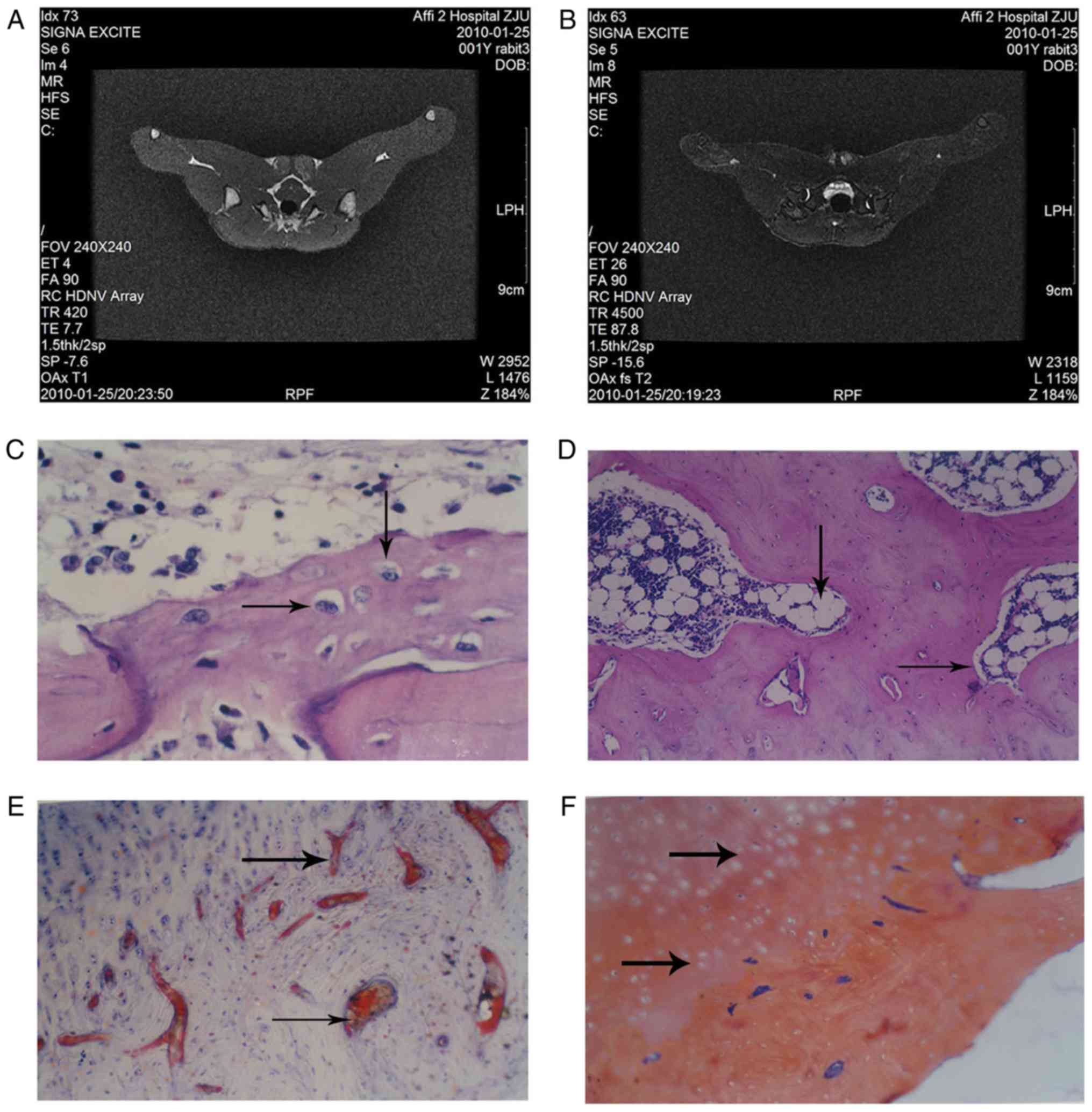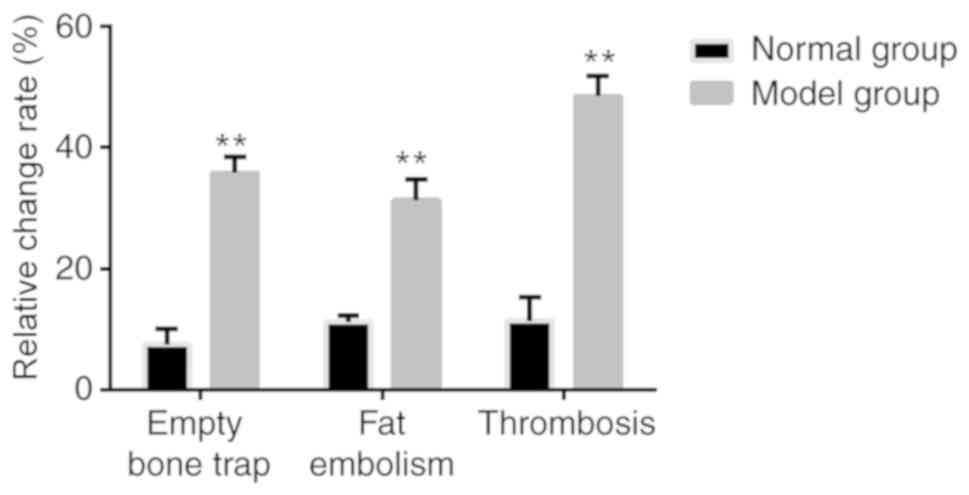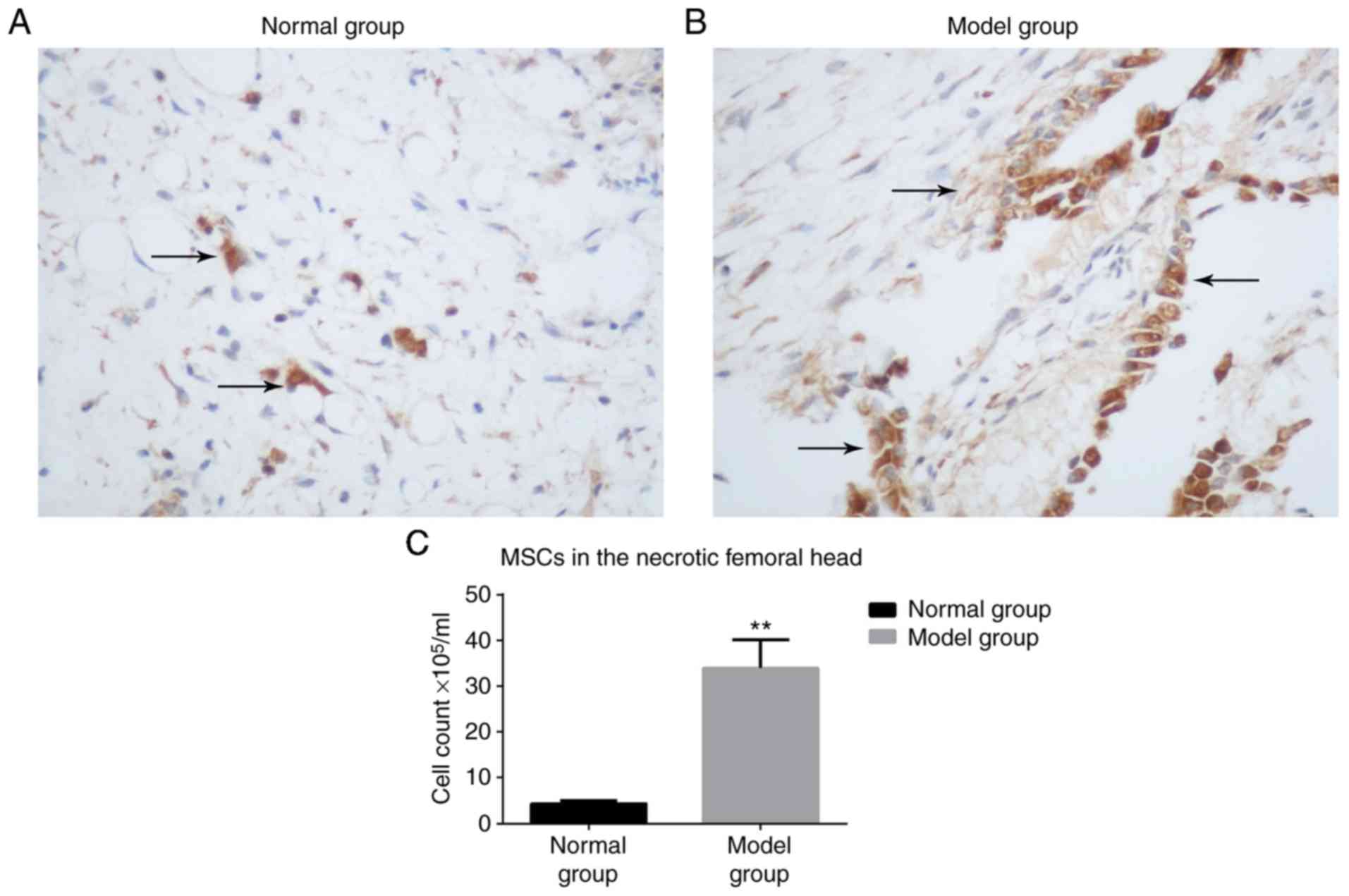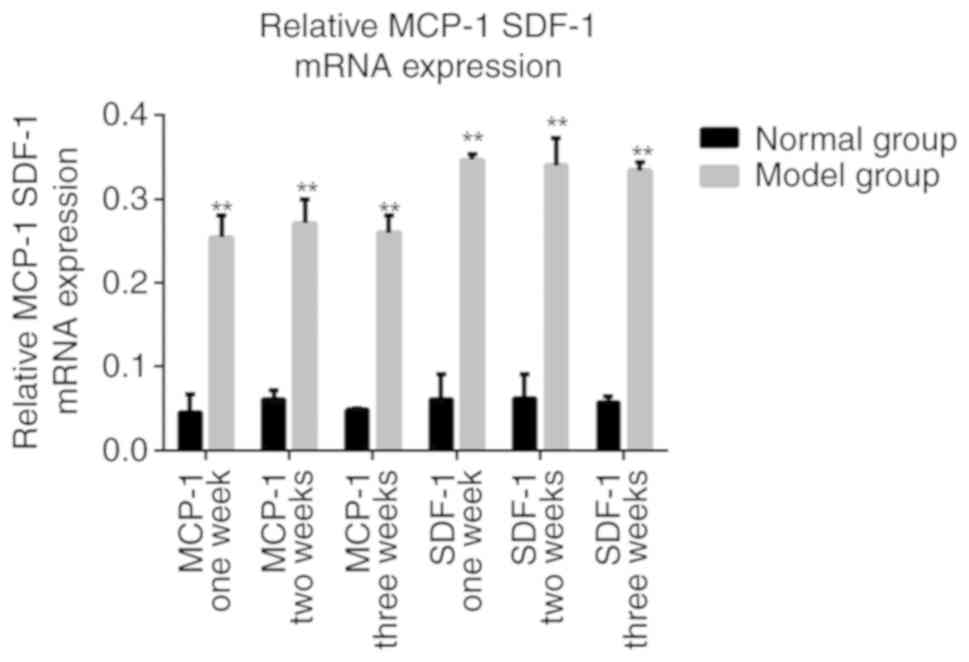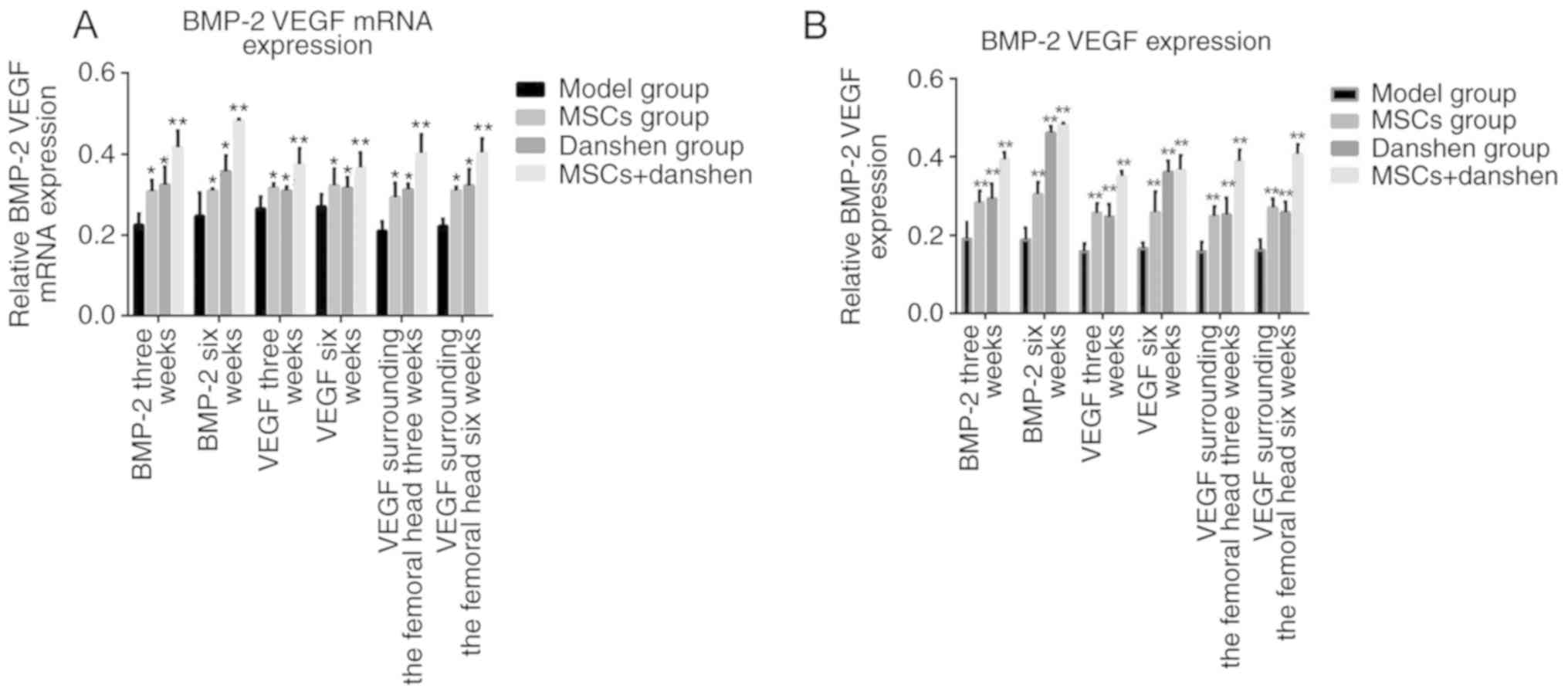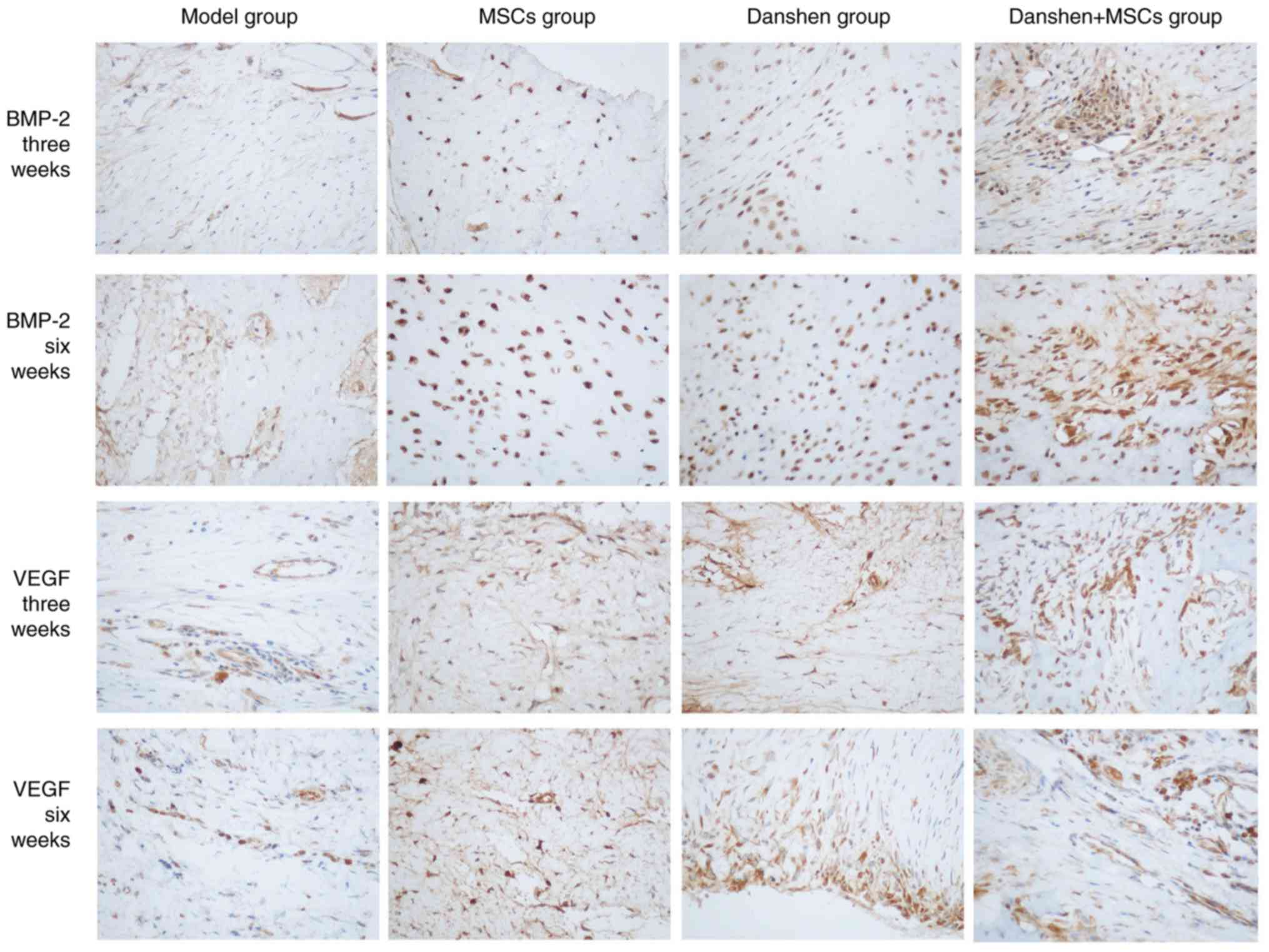|
1
|
Zhao D, Cui D, Wang B, Tian F, Guo L, Yang
L, Liu B and Yu X: Treatment of early stage osteonecrosis of the
femoral head with autologous implantation of bone marrow-derived
and cultured mesenchymal stem cells. Bone. 50:325–330. 2012.
View Article : Google Scholar : PubMed/NCBI
|
|
2
|
Ohzono K, Saito M, Takaoka K, Ono K, Saito
S, Nishina T and Kadowaki T: Natural history of nontraumatic
avascular necrosis of the femoral head. J Bone Joint Surg Br.
73:68–72. 1991. View Article : Google Scholar : PubMed/NCBI
|
|
3
|
Arlet J: Nontraumatic avascular necrosis
of the femoral head. Past, present, and future. Clin Orthop Relat
Res. 277:12–21. 1992.
|
|
4
|
Mankin HJ: Nontraumatic necrosis of bone
(osteonecrosis). N Engl J Med. 326:1473–1479. 1992. View Article : Google Scholar : PubMed/NCBI
|
|
5
|
Roshan A and Ram S: The neglected femoral
neck fracture in young adults: Review of a challenging problem.
Clin Med Res. 6:33–39. 2008. View Article : Google Scholar : PubMed/NCBI
|
|
6
|
Ciapetti G, Granchi D, Fotia C, Savarino
L, Dallari D, Del Piccolo N, Donati DM and Baldini N: Effects of
hypoxia on osteogenic differentiation of mesenchymal stromal cells
used as a cell therapy for avascular necrosis of the femoral head.
Cytotherapy. 18:1087–1099. 2016. View Article : Google Scholar : PubMed/NCBI
|
|
7
|
Tabatabaee RM, Saberi S, Parvizi J,
Mortazavi SM and Farzan M: Combining Concentrated autologous bone
marrow stem cells injection with core decompression improves
outcome for patients with early-stage osteonecrosis of the femoral
head: A comparative study. J Arthroplasty. 30 (Suppl 9):S11–S15.
2015. View Article : Google Scholar
|
|
8
|
Song HM, Wei YC, Li N, Wu B, Xie N, Zhang
KM, Wang SZ and Wang HM: Effects of Wenyangbushen formula on the
expression of VEGF, OPG, RANK and RANKL in rabbits with
steroid-induced femoral head avascular necrosis. Mol Med Rep.
12:8155–8161. 2015. View Article : Google Scholar : PubMed/NCBI
|
|
9
|
Rajpura A, Wright AC and Board TN: Medical
management of osteonecrosis of the hip: A review. Hip Int.
21:385–392. 2011. View Article : Google Scholar : PubMed/NCBI
|
|
10
|
Zhai L, Sun N, Zhang B, Liu ST, Zhao Z,
Jin HC, Ma XL and Xing GY: Effects of focused extracorporeal shock
waves on bone marrow mesenchymal stem cells in patients with
avascular necrosis of the femoral head. Ultrasound Med Biol.
42:753–762. 2016. View Article : Google Scholar : PubMed/NCBI
|
|
11
|
Kim N and Cho SG: Clinical applications of
mesenchymal stem cells. Korean J intern Med. 28:387–402. 2013.
View Article : Google Scholar : PubMed/NCBI
|
|
12
|
Wen Q, Zhou C, Luo W, Zhou M and Ma L:
Pro-osteogenic effects of fibrin glue in treatment of avascular
necrosis of the femoral head in vivo by hepatocyte growth
factor-transgenic mesenchymal stem cells. J Transl Med. 12:1142014.
View Article : Google Scholar : PubMed/NCBI
|
|
13
|
Ye YT, Zhong W, Sun P, Wang D, Wang C, Hu
LM and Qian JQ: Apoptosis induced by the methanol extract of
salvia miltiorrhiza bunge in non-small cell lung cancer
through PTEN-mediated inhibition of PI3K/Akt pathway. J
Ethnopharmacol. 200:107–116. 2017. View Article : Google Scholar : PubMed/NCBI
|
|
14
|
Park CH, Shin SH, Lee EK, Kim DH, Kim MJ,
Roh SS, Yokozawa T and Chung HY: Magnesium lithospermate B from
salvia miltiorrhiza bunge ameliorates aging-induced renal
inflammation and senescence via NADPH oxidase-mediated reactive
oxygen generation. Phytother Res. 31:721–728. 2017. View Article : Google Scholar : PubMed/NCBI
|
|
15
|
Zhou L, Zuo Z and Chow MS: Danshen: An
overview of its chemistry, pharmacology, pharmacokinetics, and
clinical use. J Clin Pharmacol. 45:1345–1359. 2005. View Article : Google Scholar : PubMed/NCBI
|
|
16
|
Argenbright LW and Barton RW: The
Shwartzman response: A model of ICAM-1 dependent vasculitis. Agents
Actions. 34:208–210. 1991. View Article : Google Scholar : PubMed/NCBI
|
|
17
|
Xia CS, Zuo AJ, Wang CY and Wang YZ:
Isolation of rabbit bone marrow mesenchymal stem cells using
density gradient centrifugation and adherence screening methods.
Minerva Medica. 104:519–525. 2013.PubMed/NCBI
|
|
18
|
Yamamoto T, Hirano K, Tsutsui H, Sugioka Y
and Sueishi K: Corticosteroid enhances the experimental induction
of osteonecrosis on rabbits with Shwartzman reaction. Clin Orthop
Relat Res. 316:235–243. 1995. View Article : Google Scholar
|
|
19
|
Saeed H, Abdallah BM, Ditzel N,
Catala-Lehnen P, Qiu W, Amling M and Kassem M:
Telomerase-deficiency-related bone loss is caused by intrinsic
impairment of mesenchymal stem cell (MSC) functions and increased
osteoclastogenesis due to pro-inflammatory micro-environment. Bone.
47:S392010. View Article : Google Scholar
|
|
20
|
Wang D, Wang G, Liu M, Sun L, Zong W,
Jiang H, Zhang H, Li H, Gong J and Sun S: A novel animal model of
osteonecrosis of the femoral head induced using a magnetic
resonance imaging-guided argon-helium cryotherapy system. Exp Ther
Med. 7:1525–1528. 2014. View Article : Google Scholar : PubMed/NCBI
|
|
21
|
Wen Q, Ma L, Chen YP, Yang L, Luo W and
Wang XN: A rabbit model of hormone-induced early avascular necrosis
of the femoral head. Biomed Environ Sci. 21:398–403. 2008.
View Article : Google Scholar : PubMed/NCBI
|
|
22
|
Nowak DA and Yeung J: Steroid-induced
osteonecrosis in dermatology: A review. J Cutan Med Surg.
19:358–360. 2015. View Article : Google Scholar : PubMed/NCBI
|
|
23
|
Li Z, Liao W, Zhao Q, Liu M, Xia W, Yang Y
and Shao N: Angiogenesis and bone regeneration by allogeneic
mesenchymal stem cell intravenous transplantation in rabbit model
of avascular necrotic femoral head. J Surg Res. 183:193–203. 2013.
View Article : Google Scholar : PubMed/NCBI
|
|
24
|
Bartonicek J, Vavra J and Bartoska R:
Operative treatment of avascular necrosis of the femoral head after
slipped capital femoral epiphysis. Arch Orthop Trauma Surg.
131:497–502. 2011. View Article : Google Scholar : PubMed/NCBI
|
|
25
|
Zlotnik A and Yoshie O: Chemokines: A new
classification system and their role in immunity. Immunity.
12:121–127. 2000. View Article : Google Scholar : PubMed/NCBI
|
|
26
|
Fritz EA, Glant TT, Vermes C, Jacobs JJ
and Roebuck KA: Chemokine gene activation in human bone
marrow-derived osteoblasts following exposure to particulate wear
debris. J Biomed Mater Res A. 77:192–201. 2006. View Article : Google Scholar : PubMed/NCBI
|
|
27
|
Marra F and Tacke F: Roles for chemokines
in liver disease. Gastroenterology. 147:577–594, e571. 2014.
View Article : Google Scholar : PubMed/NCBI
|
|
28
|
Wasmuth HE, Tacke F and Trautwein C:
Chemokines in liver inflammation and fibrosis. Semin Liver Dis.
30:215–225. 2010. View Article : Google Scholar : PubMed/NCBI
|
|
29
|
Zhang C, Wang KZ, Qiang H, Tang YL, Li Q,
Li M and Dang XQ: Angiopoiesis and bone regeneration via
co-expression of the hVEGF and hBMP genes from an adeno-associated
viral vector in vitro and in vivo. Acta Pharmacol
Sin. 31:821–830. 2010. View Article : Google Scholar : PubMed/NCBI
|
|
30
|
Young S, Patel ZS, Kretlow JD, Murphy MB,
Mountziaris PM, Baggett LS, Ueda H, Tabata Y, Jansen JA, Wong M and
Mikos AG: Dose effect of dual delivery of vascular endothelial
growth factor and bone morphogenetic protein-2 on bone regeneration
in a rat critical-size defect model. Tissue Eng Part A.
15:2347–2362. 2009. View Article : Google Scholar : PubMed/NCBI
|
|
31
|
Zhang C, Ma J, Li M, Li XH, Dang XQ and
Wang KZ: Repair effect of coexpression of the hVEGF and hBMP genes
via an adeno-associated virus vector in a rabbit model of early
steroid-induced avascular necrosis of the femoral head. Transl Res.
166:269–280. 2015. View Article : Google Scholar : PubMed/NCBI
|
|
32
|
Aldridge JM III and Urbaniak JR: Avascular
necrosis of the femoral head: Role of vascularized bone grafts.
Orthop Clin North Am. 3813–22. (v)2007. View Article : Google Scholar : PubMed/NCBI
|
|
33
|
Fairbank AC, Bhatia D, Jinnah RH and
Hungerford DS: Long-term results of core decompression for
ischaemic necrosis of the femoral head. J Bone Joint Surg Br.
77:42–49. 1995. View Article : Google Scholar : PubMed/NCBI
|
|
34
|
Koo KH, Kim R, Ko GH, Song HR, Jeong ST
and Cho SH: Preventing collapse in early osteonecrosis of the
femoral head. A randomised clinical trial of core decompression. J
Bone Joint Surg Br. 77:870–874. 1995. View Article : Google Scholar : PubMed/NCBI
|
|
35
|
Mont MA, Carbone JJ and Fairbank AC: Core
decompression versus nonoperative management for osteonecrosis of
the hip. Clin Orthop Relat Res. 324:169–178. 1996. View Article : Google Scholar
|
|
36
|
Aaron RK, Lennox D, Bunce GE and Ebert T:
The conservative treatment of osteonecrosis of the femoral head. A
comparison of core decompression and pulsing electromagnetic
fields. Clin Orthop Relat Res. 249:209–218. 1989.
|
|
37
|
Bassett CA, Schink-Ascani M and Lewis SM:
Effects of pulsed electromagnetic fields on Steinberg ratings of
femoral head osteonecrosis. Clin Orthop Relat Res. 246:172–185.
1989.
|
|
38
|
Sugioka Y, Hotokebuchi T and Tsutsui H:
Transtrochanteric anterior rotational osteotomy for idiopathic and
steroid-induced necrosis of the femoral head. Indications and
long-term results. Clin Orthop Relat Res. 277:111–120. 1992.
|
|
39
|
Boettcher WG, Bonfiglio M and Smith K:
Non-traumatic necrosis of the femoral head. II. Experiences in
treatment. J Bone Joint Surg Am. 52:322–329. 1970. View Article : Google Scholar : PubMed/NCBI
|
|
40
|
Buckley PD, Gearen PF and Petty RW:
Structural bone-grafting for early atraumatic avascular necrosis of
the femoral head. J Bone Joint Surg Am. 73:1357–1364. 1991.
View Article : Google Scholar : PubMed/NCBI
|
|
41
|
Kirschenbaum IH, Vernace JV, Booth RE Jr,
Balderston RA and Rothman RH: Total hip arthroplasty for
osteonecrosis. Semin Arthroplasty. 2:234–240. 1991.PubMed/NCBI
|
|
42
|
Katz RL, Bourne RB, Rorabeck CH and McGee
H: Total hip arthroplasty in patients with avascular necrosis of
the hip. Follow-up observations on cementless and cemented
operations. Clin Orthop Relat Res. 281:145–151. 1992.
|
|
43
|
Plakseychuk AY, Kim SY, Park BC,
Varitimidis SE, Rubash HE and Sotereanos DG: Vascularized compared
with nonvascularized fibular grafting for the treatment of
osteonecrosis of the femoral head. J Bone Joint Surg Am 85-A.
589–596. 2003. View Article : Google Scholar
|
|
44
|
González Della Valle A, Bates J, Di Carlo
E and Salvati EA: Failure of free vascularized fibular graft for
osteonecrosis of the femoral head: A histopathologic study of 6
cases. J Arthroplasty. 20:331–336. 2005. View Article : Google Scholar : PubMed/NCBI
|
|
45
|
Duran JM, Makarewich CA, Sharp TE,
Starosta T, Zhu F, Hoffman NE, Chiba Y, Madesh M, Berretta RM, Kubo
H and Houser SR: Bone-derived stem cells repair the heart after
myocardial infarction through transdifferentiation and paracrine
signaling mechanisms. Circ Res. 113:539–552. 2013. View Article : Google Scholar : PubMed/NCBI
|
|
46
|
Zhang HX, Zhang XP, Xiao GY, Hou Y, Cheng
L, Si M, Wang SS, Li YH and Nie L: In vitro and in vivo evaluation
of calcium phosphate composite scaffolds containing BMP-VEGF loaded
PLGA microspheres for the treatment of avascular necrosis of the
femoral head. Mater Sci Eng C Mater Biol Appl. 60:298–307. 2016.
View Article : Google Scholar : PubMed/NCBI
|
|
47
|
Street J, Bao M, deGuzman L, Bunting S,
Peale FV Jr, Ferrara N, Steinmetz H, Hoeffel J, Cleland JL,
Daugherty A, et al: Vascular endothelial growth factor stimulates
bone repair by promoting angiogene-sis and bone turnover. Proc Natl
Acad Sci USA. 99:9656–9661. 2002. View Article : Google Scholar : PubMed/NCBI
|















